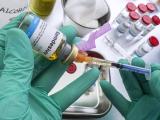The antiviral drug Paxlovid drove down the risk of COVID-19 hospitalization or death by 44% in a highly vaccinated group of US adults aged 50 and older, suggests a large study published today in the Annals of Internal Medicine.
A team led by Brigham and Women's Hospital researchers studied the risk of hospitalization by 14 days and death by 28 days among 44,551 nonhospitalized COVID-19 patients aged 50 and older prescribed Paxlovid (nirmatrelvir-ritonavir) amid Omicron variant predominance from Jan 1 to Jul 17, 2022.
A total of 28.1% of patients were prescribed Paxlovid, and 71.9% were not. Of all participants, 90.3% had received at least three COVID-19 vaccine doses.
Hispanic, Black patients less likely to receive Paxlovid
Patients taking Paxlovid were more likely to be older and vaccinated and to have more underlying illnesses than those not taking the drug. Hispanic (adjusted odds ratio [aOR], 0.77) and Black (aOR, 0.53) patients were less likely than their White peers (by 23% and 47%, respectively) to be prescribed Paxlovid.
However, participants living in neighborhoods in the highest quartile of disadvantage were given Paxlovid prescriptions at similar rates as those living in more advantaged areas.
Composite hospitalization or death occurred in 0.55% of the Paxlovid group and 0.97% of the non-Paxlovid group (adjusted risk ratio [aRR], 0.56). Paxlovid recipients were at a 40% lower risk for hospitalization (aRR, 0.60) and a 71% lower risk of death (aRR, 0.29). No hospitalizations were attributable to viral rebound, or the return of infection and symptoms after an apparent recovery among Paxlovid recipients.




















